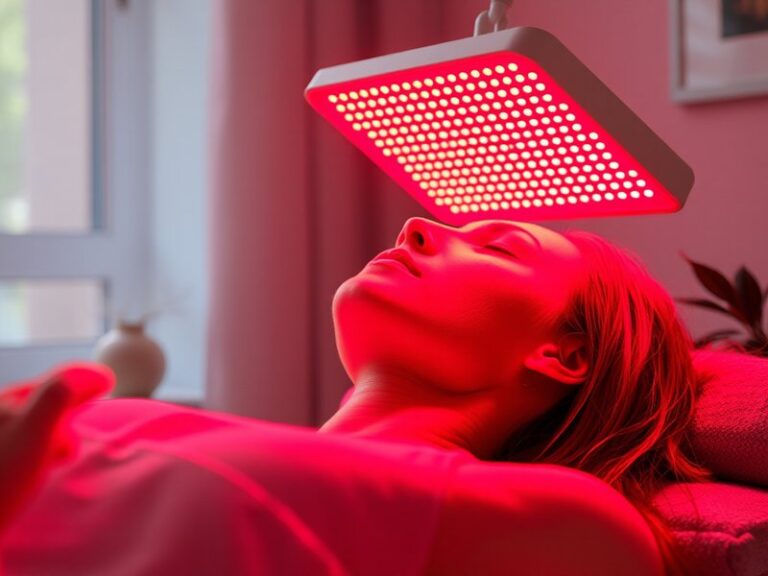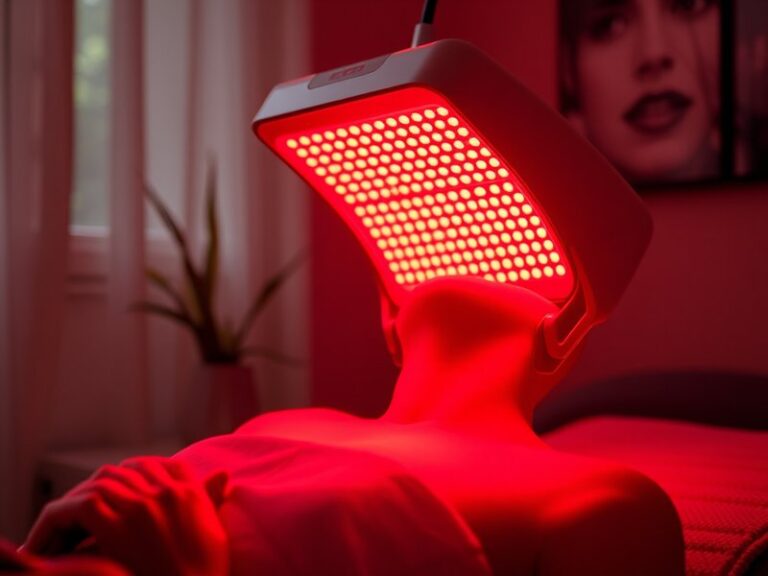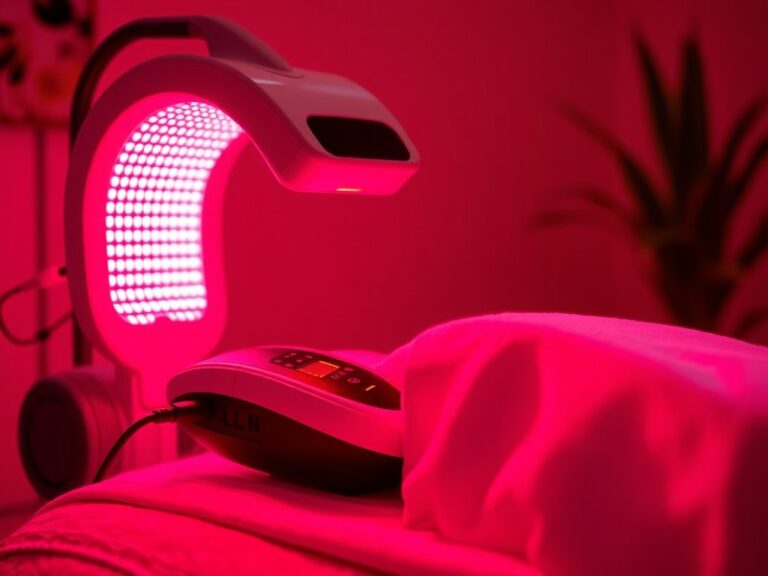Can Red Light Therapy Be Covered By Insurance?
Can Red Light Therapy Be Covered By Insurance?
Are you considering red light therapy but wondering whether your insurance plan will cover the costs?
This article will explore the ins and outs of red light therapy, its potential benefits, and whether insurance typically offers coverage for such treatments. Understanding these aspects can help you make informed decisions about your health and financial planning.
Key Takeaways
- Red light therapy is recognized for various health benefits, but its insurance coverage varies by provider.
- Clear documentation and recommendations from healthcare professionals can enhance your chances of getting coverage.
- Alternative treatments may exist if insurance does not cover red light therapy, providing you with other options.
What is Red Light Therapy?
Red light therapy (RLT) is a non-invasive treatment that uses low-wavelength red light to stimulate cellular function and promote healing. Originally developed for astronauts to counteract muscle and bone loss in space, RLT has since garnered attention for its potential to relieve pain, improve skin health, and accelerate wound healing.
Discover more in Is Red Light Therapy the Same as Near Infrared?
RLT typically involves exposure to light from laser diodes or LEDs, which penetrate the skin to promote increased circulation, reduce inflammation, and stimulate collagen production.
Mechanism of Action
The science behind red light therapy involves photo-biomodulation, where the red light wavelengths trigger a series of biological processes at the cellular level. This can lead to enhanced ATP production (the energy currency of cells), reduced oxidative stress, and improved cell signaling.
Common Uses
Red light therapy is commonly used for:
- Skin rejuvenation and acne treatment
- Wound healing and scar reduction
- Joint pain relief and muscle recovery
What are the Benefits of Red Light Therapy?
Engaging in red light therapy can offer a multitude of advantages that extend beyond mere skin treatments. Below are some significant benefits.
Pain Relief
Numerous studies indicate that RLT can effectively alleviate pain associated with conditions like arthritis, backaches, and tendonitis. For example, a study published in the journal Pain Research and Management found that patients with chronic pain reported significant reductions after a series of RLT sessions.
Skin Health Improvement
RLT is widely recognized for its ability to enhance skin appearance by stimulating collagen production. This process can help reduce signs of aging, such as wrinkles and fine lines, as well as assist in treating conditions like acne and psoriasis.
Enhanced Recovery Rates
Athletes and fitness enthusiasts have turned to RLT for its potential to expedite muscle recovery post-exercise. By increasing circulation and reducing inflammation, RLT may help improve performance and stamina during workouts.
Mood Enhancement
Some studies suggest that RLT may positively affect mood by improving sleep and reducing symptoms of depression. The therapy may help regulate circadian rhythms and support overall mental well-being.
Is it Possible to Get Red Light Therapy Covered by Insurance?
The possibility of having red light therapy covered by insurance can greatly depend on several factors, including the specifics of your insurance plan, the intended use of RLT, and the regulations in your state. Many insurance providers are primarily focused on traditional medical treatments, which can make coverage for alternative therapies like RLT less common.
What are the Advantages of Seeking Coverage?
Pursuing insurance coverage for RLT can help lessen the financial burden of treatment. Some potential advantages include:
- Substantial cost savings if the therapy is approved.
- Access to professional guidance and integrated healthcare.
- Increased credibility of RLT as a treatment method when covered by insurance.
What are the Disadvantages of Seeking Coverage?
While seeking insurance coverage for red light therapy has its benefits, there are disadvantages to consider as well:
- The process can be lengthy and frustrating, requiring extensive paperwork.
- Coverage may only be granted for specific health conditions, limiting your options.
- Not all providers accept every insurance plan, which can complicate access to treatment.
What are the Things to Consider Before Pursuing Insurance Coverage?
There are several key factors to evaluate before beginning the process of seeking insurance coverage for red light therapy.
Documentation of Medical Necessity
Having documentation from your healthcare professional that details the medical necessity of red light therapy can improve your chances of coverage. Be sure to keep records and communicate openly with your provider about your treatment goals.
Insurance Plan Details
Review your insurance policy to understand what treatments are typically covered. Some plans might have specific exclusions or require pre-authorization for alternative treatments.
Provider Credentials
Ensure that the facility you’re considering for RLT is in-network with your insurance provider. The qualifications of the practitioners administering the therapy can also affect covered services.
What are the Alternatives to Red Light Therapy?
If red light therapy is not covered by insurance or is not an option for you, consider these alternatives for similar benefits.
Cold Laser Therapy
Cold laser therapy is a similar non-invasive treatment that also aims to reduce pain and promote healing. Often considered a medical procedure, it may be more readily covered by insurance.
Physical Therapy
Traditional physical therapy can be an effective alternative, particularly for pain management and rehabilitation. Many insurance plans cover physical therapy sessions, especially if prescribed by a physician.
Topical Treatments
For skin-related concerns, prescription topical treatments might be covered by insurance. These can include corticosteroids for inflammatory skin conditions or retinoids for acne treatment.
Conclusion: Is it Recommended to Pursue Insurance Coverage for Red Light Therapy?
While the benefits of red light therapy are significant, navigating insurance coverage can be complex. It is advisable to research your insurance policy thoroughly, seek necessary documentation from healthcare professionals, and weigh your options before proceeding. If not covered, alternatives exist that may effectively meet your needs.
Discover Can Red LEDs Be Used for Therapy?
Frequently Asked Questions
Is red light therapy safe?
Yes, red light therapy is generally considered safe when administered correctly. It’s non-invasive and has minimal side effects, making it suitable for most individuals.
How much does red light therapy typically cost without insurance?
Costs for red light therapy can vary widely depending on the provider and location. Sessions may range from $25 to $150, with packages potentially lowering the overall cost.
Will all insurance companies cover red light therapy?
Not all insurance companies offer coverage for red light therapy, and it often depends on the specific health condition being treated and the provider’s policies.
Can I get a prescription for red light therapy?
Yes, if deemed medically necessary, your healthcare provider may be able to write a prescription for red light therapy, which can help in obtaining coverage.
What should I do if my insurance claims are denied?
If your claims are denied, you may appeal the decision through your insurance company. Providing additional medical documentation and clear justification of the therapy’s necessity can improve your chances of a favorable outcome.






